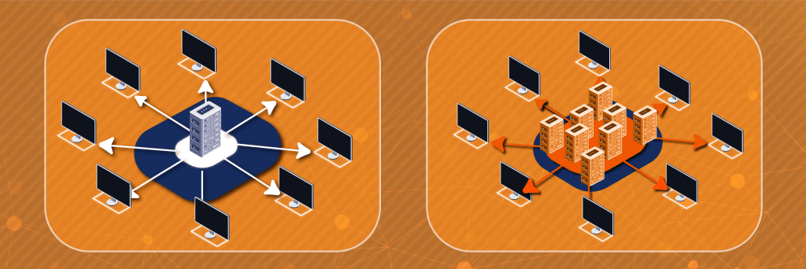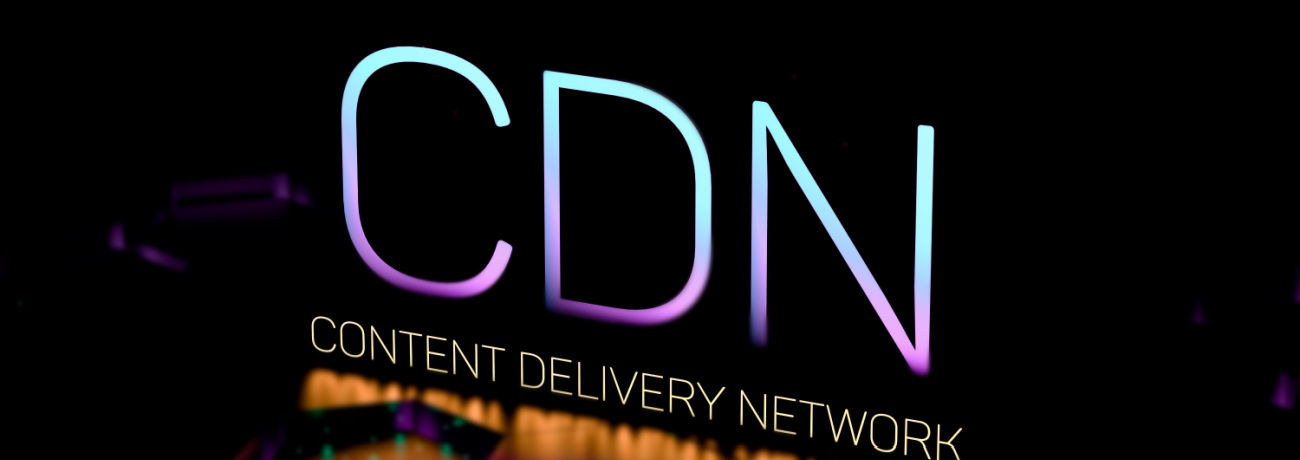What is a CDN and how does it improve network latency?

José Miguel Poveda
When we talk about the Internet, there are many concepts that make it up, and the quality of each of them is what allows us to deliver a better Internet. Among the concepts we have are national and submarine optical fiber networks, metropolitan and access networks, connections with other operators to expand coverage, traffic exchange points or IXP for short (Internet Exchange Point), network sharing agreements between operators or Peerings, and of course, direct connection to the most relevant content on the Internet.
Diving deeper into the topic of content and its importance in an Internet ecosystem, we can say that most of the content accessed on the Internet is content that is stored and later retrieved (usually known as "cacheable" content). This content, which can be a music video, a song, a movie, a photo, etc., is stored on a server physically located somewhere, and all people interested in this content must navigate to the server, locate the file, and play it.
Having the file on a single server has a series of disadvantages, including depending on a single device, geographically distant locations (the server can be anywhere in the world), which implies higher latency, more networks to use to reach it, which means higher costs, and other problems that centralized networks or content bring.
To counteract this, the concept of CDN, Content Delivery Network, was born, and in response to the question, 'What is a CDN?' we can say that it is a network of interconnected servers distributed geographically in different locations, with the goal of delivering information or content to the edge of the network, as close to the end user as possible.
In this way, the information is stored on a server and it replicates the data to the other network devices in an intelligent way, measuring, among other parameters, the 'popularity' of content in a specific area and ensuring that the server closest to that area has the information available to serve users. This undoubtedly creates a better user experience.

Being close to user content solves many of the problems of the previous scheme:
- Latency improves significantly because it depends on distance, and having content nearby, in the same continent or even the same country, reduces query times from over 150 ms to 50 ms and even as low as 2 ms.
- Less use of networks, ports, and interconnections leads to lower costs.
- It reduces the likelihood of content being unavailable due to events or failures, and packet loss, resulting in freezing of a movie or voice interruptions in a call.
- It reduces global network congestion, and in general, the user experience is much better. In fact, during 2020, when there was an extreme increase in Internet usage due to global lockdowns, CDNs played a crucial role in preventing the Internet ecosystem from collapsing, keeping everyone connected and enjoying its content.
For Internet Service Providers (ISPs), this reduced congestion means lower contention, as their users spend less time on the network, downloading content faster, resulting in more efficient bandwidth use, and they can serve more end users with the same bandwidth while still maintaining service quality.
Content that is close ends or at least significantly reduces user complaints about 'lag' in a video game or long loading times for a movie, allowing for uninterrupted viewing. A robust platform with content and CDN connections offers better performance.
On the other end of the chain are developers, owners of applications and content, for whom having their content close to the user is vital. Their interest in networks or CDNs is increasingly relevant, as these ensure that their content is always available and easily and quickly accessible to their target audience, regardless of where they are in the world.
In the Internet, speed is a critical factor. If an application like a video game is slow and doesn't allow playing with people on the other side of the world, it won't be attractive and won't be used. Information is decentralized, but if Internet content takes too long to open, users will simply close the page, there will be no interaction, and the content will not be seen.

At InterNexa, we are experts in data connectivity and the Internet, with over 20 years of close collaboration with content-generating companies (office suites, video games, video streaming, among others), aiming to provide high-quality Internet service and better performance to clients in Latin America.
We have developed a series of global agreements to interconnect the most relevant and important Internet content directly and at a shorter distance. This is true whether their geographic location is in South America, the United States, or Europe, connecting through interconnections at the main Internet Exchange Points (IXP - Internet Exchange Point), using a regional network with high speed and availability. This allows our clients and their own customers to enjoy faster downloads, high-definition videos, greater speed when using applications, better gaming performance, and a better experience when connecting to collaborative work platforms.
In other words, we make it easier for our clients and their businesses to stay connected with the world and successfully address the challenges of today's world.
Frequently Asked Questions About CDNs:
What is a CDN and what is its primary function?
A CDN is a geographically distributed network of servers that helps accelerate the delivery of web content. Its primary function is to store and deliver copies of a website's static files from servers close to the user, reducing latency and improving loading performance.
What are the benefits of using a CDN?
Some key benefits of a CDN include improved page loading speed, reduced load on the main server, the ability to handle traffic spikes, DDoS attack mitigation, and an enhanced user experience with faster and more reliable content.
What type of content can be delivered through a CDN?
A CDN can deliver a wide variety of content, including HTML files, CSS, JavaScript, images, videos, downloadable files, and other static elements. It can also be used to deliver streaming content, such as real-time videos, through its media delivery functionality.
If you want to learn more about what our Internet service can do for your business, click here and request a meeting with one of our specialists. It will be our pleasure to work together and move forward in the digital age.

José Miguel Poveda
Electronic Engineer specialized in the area of Telecommunications. Market knowledge at a regional level, management of providers, ISPs and service providers in Colombia, Ecuador, Peru, Brazil, Venezuela, the United States and Europe. Customer service in the Wholesale & Enterprise sector. Experience in the design, implementation and support of SDH, PDH, Ethernet, Wavelengths, Peering & Content networks at a regional level.
.webp?width=150&height=68&name=Logo%20Espa%C3%B1ol%20Fondos%20Claros%20(1).webp)
.webp?width=130&height=58&name=Logo%20Espa%C3%B1ol%20Fondos%20Claros%20(1).webp)








.jpeg?width=352&name=Datacenter%20(1).jpeg)
.jpeg?width=352&name=5g%20(1).jpeg)

.jpeg?width=352&name=Internet%20para%20empresas%20(1).jpeg)
